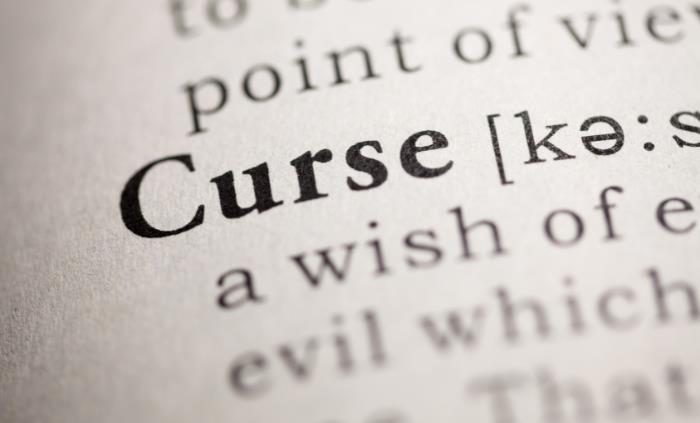
Gather round, all lovers of the strange and mysterious. Today we'll be dealing with fate and reading about some of the world's most cursed books. Some are quite benign yet mystifying, and others are believed to be truly cursed, leaving behind a trail of damage and even death wherever they go.
Year of publication: early 13th century.
What’s inside it: The Codex Gigas is a Bible written in a monastery in Bohemia, modern-day Czech Republic. It is also referred to as the devil's Bible due to a fully colored portrait of Satan taking up a whole page. And when we say a whole page, we mean a full, 36-inch page. Yes, this is the largest illustrated medieval manuscript in the world - with a length of 36 inches, a width of 20 inches, and a total back-to-back thickness of almost 9 inches. The juxtaposing page to the devilish illustration contains a full description of the kingdom of heaven. The entire book is written in Latin.
Why it’s cursed: There is some elaborate folklore surrounding the book's origins, probably stemming from the large portrait of the devil. According to the legend, the codex was written by Herman the Recluse, a monk who broke his monastic vow and sentenced to be walled up alive. In order to try and escape his dire fate, he promised to write a book that would glorify the monastery forever- a book that contained the entire knowledge of the universe.
Herman the Recluse was given one try to complete the book. If he hadn’t finished it by dawn, the sentence would be executed. Realizing by midnight that the task was impossible, Herman turned to the devil, who helped him finish the book for the price of his soul.
Some say that Satan‘s portrait is his own signature, and others believe that Herman drew the portrait himself as a thanks.
Year of publication: 1608
What’s inside it: This book is written in German, and tells the story of an Egyptian mage teaching magical and Kabbalistic secrets to his son. It contains many summoning guides for angels and demons alike, as well as some practical magic like how to walk underwater, forge gold, and even turn someone into a donkey.
Why it's cursed: The central ritual in the book will allow sorcerers to communicate with their celestial parallel, but this ritual comes with a cost. One would have to summon and conquer all the demons of hell before being able to return to the physical realm.

Year of publication: unknown. There is evidence suggesting that it was written in the early 15th century, early 16th century, early 18th century, or even the 19th century.
What’s inside it: a black magic grimoire. A grimoire is a textbook of magic, usually including instructions on how to perform spells, create magical objects, or summon supernatural entities.
Why it’s cursed: The grand grimoire has been described as the first explicitly diabolical mass-market grimoire. That’s what makes it cursed. You would think that there wouldn’t be much audience for such a book, but this book became terrifyingly popular. It was widely distributed in chapbook form (printed sheet literature) and even sold in bookstores during the 19th century. The book spread like a plague. Church officials embarked on a mission to vilify the book, but this campaign was all too successful; people began viewing all books as sinister, and simply buying a book was considered dangerous.
Year of publication: 1859
What’s inside it: a collection of poetry by the 11th-century Persian poet Omar Khayyam translated by Edward Fitzgerald.
Why it’s cursed: don’t judge a book by its cover. What makes this book cursed is not its content but its binding. In 1912, a bookbinder by the name of Frances Sangorsky created a lavishly embellished binding of the book - with silver, mahogany, ivory, leather, and over 1050 jewels, including ruby, garnet, topaz, turquoise, and gold. Once the final product was finished (after two years of labor), it was time to sell, but that’s when the trouble started.
The book was priced at 1,000 pounds (roughly US$150,000 in today’s market), and selling it in Britain was hard. The sellers shipped the book to the US, but a misunderstanding with US customs resulted in the book being shipped back to London. The book finally sold at an auction for less than half its original price. Heavy-hearted and empty-pocketed, the seller shipped the book to the buyer overseas again, and so, the bejeweled book enjoyed another ocean cruise. Except that this time, it was on board of the Titanic.
This specific copy was never recovered from the wreckage, but it was recreated again in the 1930s using the original plans. It was almost an exact copy. This copy was completed just as World War II began. To protect the book from bombs, it was placed in a vault in London, but it ended up being ruined in the Blitz. While the safe survived, the book inside it was ashes. Only the jewels remained unharmed.

Year of publication: 1978
What’s inside it: While the name may sound like this is another grimoire, this is actually a pretty straightforward, elaborate, and educational history book about Haiti from 1492 to 1995.
Why it’s cursed: The book was written by Robert and Nancy Heinl, who were living in Haiti when, like so many other Americans, they were banished in 1963 due to a political deterioration of the relations between the United States and Haiti.
The book was published seven years after the Haitian leader had died, but his widow was offended by the book's unflattering depiction of her late husband. After a series of unfortunate events surrounding the book, some couldn’t help but wonder if the book was cursed by the widow.
During print, the manuscript was lost, stolen, retrieved, and sent to binding, where the folding machine malfunctioned. Once it was finally published, a journalist assigned to cover the book's publication fell sick with appendicitis. The Heinls themselves claimed all their non-electric clocks had suddenly stopped.
Sadly, the curse does not end here. Robert Heinl was injured when the stage collapsed beneath him while he was delivering a speech. This incident was followed by a dog attack he experienced as he was walking close to home. Just several months after publishing the book, Robert died of a sudden heart attack while on vacation with his wife.
